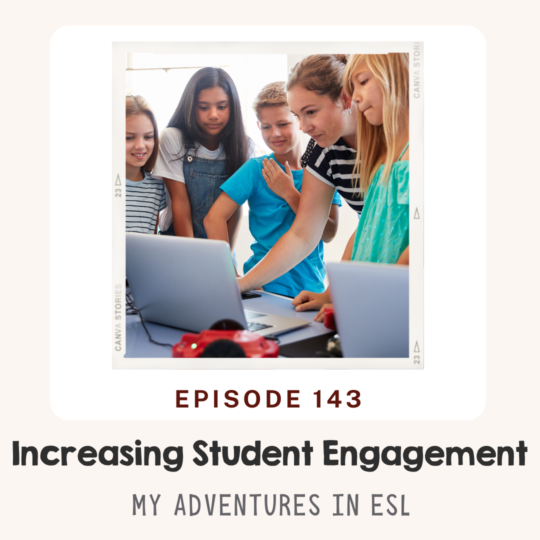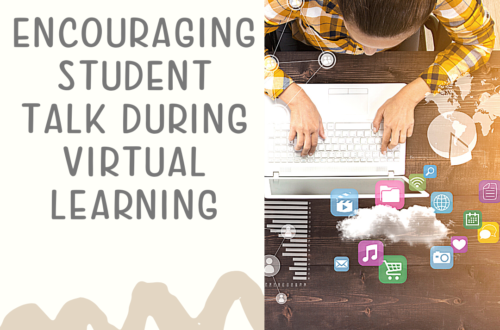
EP. 143 Improving Engagement Among Language Learners
Welcome educators! Before we get started I want to share with you the amazing resources I have available. To learn more and download some engaging resources go to myadventuresinesl.com/store.
You are an efficient, engaging, and hard-working educator. The work that you are doing for your students is appreciated. Thank you for your dedication and the time you put in to ensure your students succeed.
Today’s podcast aims to provide you with simple and effective strategies you can use in your classroom to increase student engagement among your students. These may surprise you because we often think that adding some games increases student engagement. Let’s dive into strategies you can use to improve student engagement among your Language Learners.
Take Responsibility For their Learning
Students taking responsibility for their learning is one of the most effective ways to increase student engagement in the classroom. One of my go-to ways to do this is goal setting in the classroom. For example, in my classroom this school year, students will have a goal-setting passport. At the beginning of the class, I will review the class goals for the day. At the end of class, I will have a quick checklist of the goals. I plan on asking the students if they meet those goals by reviewing the points on the checklist. If they did meet the goals, they would get a stamp on their passport. After so many stamps, the students can go to the class treasure box.
Taking responsibility for their learning gives the students power for their education.
Ask Open Ended Questions
Open-ended questions can increase engagement in a classroom. Open-ended questions require students to think more deeply and critically rather than just recalling facts. To help you think of some open-ended questions use Bloom’s question stems. I keep them next to where I am teaching to help me generate some questions. You can also embed the open-ended questions into your lessons.
Open-ended questions also promote student discussions. Since they don’t have a single correct answer, students are more likely to participate in discussions. Students are usually eager to share their opinions, and this is the perfect opportunity to do so in the classroom.
Open-ended questions are also beneficial to the teacher because they can quickly help you assess if the students understand the topic. The depth and breadth of students’ responses can provide insights into their comprehension and highlight areas needing further clarification.
Make Connections
I love seeing when students can make connections during the learning process. It is such an effective tool to increase engagement in the classroom. Making connections in the learning process significantly enhances student engagement by linking new information to prior knowledge, experiences, and real-world contexts.
Making connections provides the students with deeper connections to the topics and lessons they are learning. It also encourages active learning. Making connections requires students to actively think about how new information fits into their existing mental framework. This active engagement promotes deeper learning and helps students become more involved in the learning process.
Making connections across different subjects shows students how knowledge is interconnected. This approach can make learning more engaging as students see the bigger picture and understand how different fields of study relate to each other.
Provide Choices
The last tip I will provide is one that we all can start doing today. Providing choices is a powerful way to increase student engagement.
When students are given choices, they feel more in control of their learning. This sense of autonomy can boost motivation and engagement, as students are more likely to invest effort in activities they have chosen themselves.
By offering choices, teachers can cater to diverse learning styles and preferences. This personalization helps meet students’ individual needs, making learning more relevant and enjoyable for each student.
In a diverse learning classroom, providing choices allows for differentiation, where students can work at their own pace. Students can choose tasks suited to their skill levels, or select topics that challenge them appropriately. This individualized approach helps keep all students engaged, regardless of their abilities.
If you found value in today’s episode, go to myadventuresinesl.com/store for the detailed lesson plan which includes 2 full weeks of lesson plans and activities.




